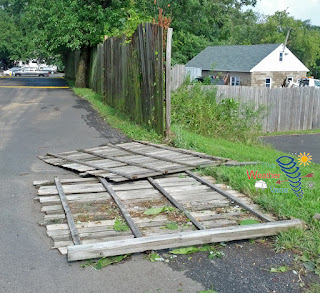The_Weather_Vane in 2012 - a year of blogging..
I am happy to say that I witnessed many events this year which helped push me to document and learn more about weather events. Last year I took two courses at the Mt. Holly National Weather Service so that I can be a volunteer Storm Spotter. With this I report key information that Meteorologists use to help produce "ground truth" so that they can compare data with other advanced weather tools and information. This year I learned about Tsunamis, Space Weather events and read and wondered how much more I should do to learn about Meteorology and being a Writer.
After thinking of new ways for me and this blog to evolve I have stepped things up to a new level. I have enrolled with an online Meteorology program with Penn State. I am anxious to learn even more as I exercise my mind in writing here and learning from experts.
If you are new to the blog I am here to help. Here is a summary of events with links to each story that I posted throughout this year.
TWV first anniversary Sept
I reported storms as a Storm Spotter and made many updates to the blog.
http://climatedriver.blogspot.com/2012/09/theweathervanes-anniversary.html
Storm Chaser Andy Gabrielson killed by drunk driver Feb
Tragic accident for a dedicated professional storm chaser
http://climatedriver.blogspot.com/2012/02/andy-gabrielson-pro-storm-chaser.html
Tornado Warning June
Horsham was mentioned on the Weather Channel Live
http://climatedriver.blogspot.com/2012/06/tornado-warning-in-se-pa-612012.html
What is a Tsunami My father's story Jan
My father witnessed two tsunami's
http://climatedriver.blogspot.com/2012/01/what-is-tsunami.html
First Dual Pole Image (NJ/PA NWS) Jan
Dual Pole Radar upgrade test
http://climatedriver.blogspot.com/2012/01/first-dual-pole-image.html
Lightning in Horsham May
One of a few lighting photos I took from my balcony
http://climatedriver.blogspot.com/2012/05/lightning-in-horsham-part-ii.html
Extreme Weather - Dallas TX Hail Storm June
Video of a terrible hail storm in Dallas with a hail stone size list.
http://climatedriver.blogspot.com/2012/06/extreme-weather-dallas-tx-hail-storm.html
Hurricane Sandy became Superstorm Sandy
I have to talk about all my posts about this storm. Many news outlets and weather watchers complained about the over use of hype and scare tactics reporting about this storm that was coming up the East Coast. I for one am happy that I spoke up about this storm. I was talking about Sandy online and posted here on the bog days before it hit our area. Did my warnings help you?
Being Ready for Hurricane Sandy (my first talk about this storm) Oct 26th
http://climatedriver.blogspot.com/2012/10/being-ready-for-hurricane-sandy.html
Hurricane Sandy - Before the storm (I was bringing news updates during the storm)
Oct 28th
http://climatedriver.blogspot.com/2012/10/hurricane-sandy-before-storm.html
Hurricane Sandy reaches PA (photos after the storm) Oct 29th
I took many pictures of storm damage around Montgomery and Philadelphia Counties in PA
Get your "The_Weather_Vane" App for your smartphone
http://climatedriver.blogspot.com/2012/10/hurricane-sandy-reaches-pa.html
Finally, here is a video from one of my favorite online Weather Sources Wunderground.com

+Conditions+&+Forecast+2012-10-29+15-46-55.png)





















